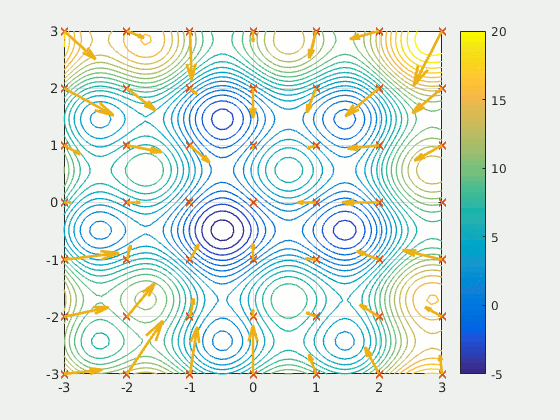Particle Swarm Search
The Particle Swarm Search is one of the non-circular search options in Slide2 for locating critical slip surfaces. The Particle Swarm Search is also known as Particle Swarm Optimization (PSO).
The Particle Swarm Search is a metaheuristic search method in which randomness is introduced in some steps of the algorithm.
To enable a Particle Swarm Search:
- In the Slip Surface Options dialog, set the Search Method = Particle Swarm Search.
- Set the Number of Mins to One or Multiple.
The Particle Swarm Search requires no user defined search objects, the algorithm will run automatically when you select Compute.
One Min or Multiple Mins
It is often the case that a slope will have multiple critical regions that may fail, instead of a single critical region. However, slope stability analyses generally focus on the search for the single global minimum surface.
With the Multiple min option, the user can now let the algorithm search for multiple local mins instead of the single critical one – this is called multimodal PSO. The parameter of note is the “radius span of search space.” The number of local mins found will be equivalent to the number of particles in the search (default 50 particles). As such many of these will be very similar. The radius option filters out the surfaces that are similar and only takes the most critical local minima in each region. The default value of 10% is recommended.
As with all non-circular search methods, optimization is strongly recommended with PSO, particularly in the case of multiple mins. Without optimization, the multiple min search may not necessarily locate the global minimum, as it is searching for local minima. However, once optimization is checked on, it is able to find the same global minimum as the unimodal case, in the vast majority of cases. It is worth noting that when optimization is checked on, the radius input is automatically reduced in the Slide2 computation – this was found to generate optimal results. This means that it is possible (albeit unlikely) for more surfaces to exist when optimization is checked on as opposed to when it is off.
Particle Swarm Search Method
- Search starts with a random population of failure surfaces in the search scope (known as particles)
- Particle Swarm Search can use either spherical or ellipsoidal surfaces
- The search proceeds by updating each particle for the next iteration:

- One min case (unimodal): Updating parameters in Vi are selected randomly such that the new particle is inspired by the best-found solution among all particles (SG) and best-found solution by that particle in the previous iterations (SB)
![]()
- Multiple min case (multimodal): Updating parameters in Vi are selected randomly such that the new particle is inspired by the two closest neighbouring particles (N1, N2):
![]()
- Search process is stopped after a finite number of iterations
Schematic illustration of Particle Swarm Search algorithm
